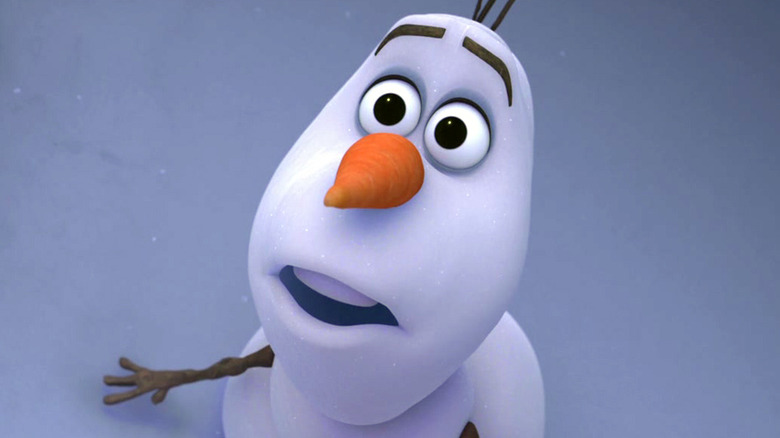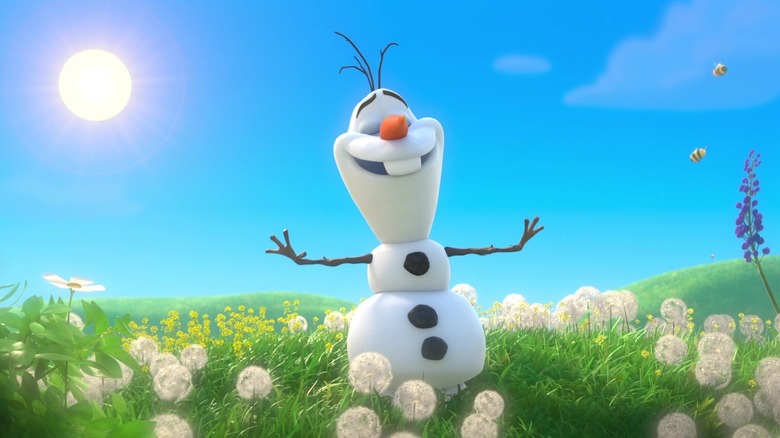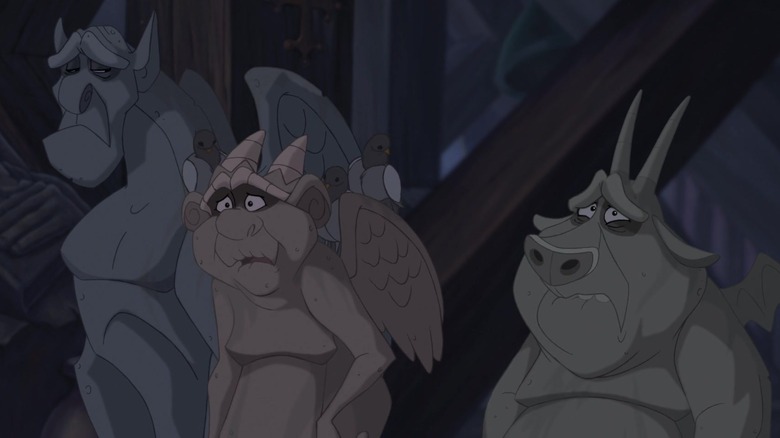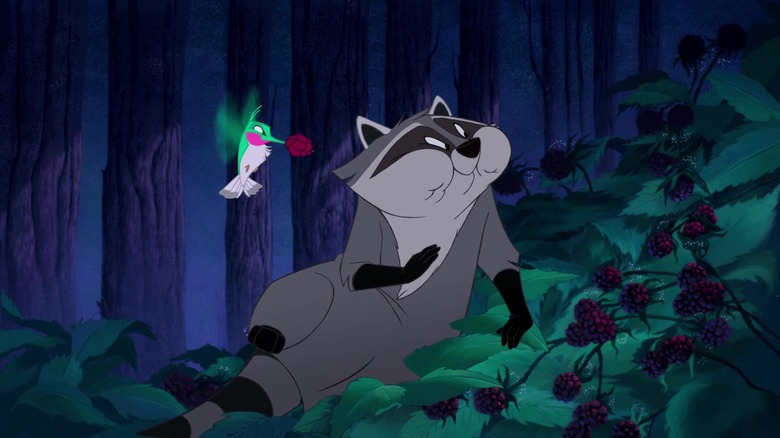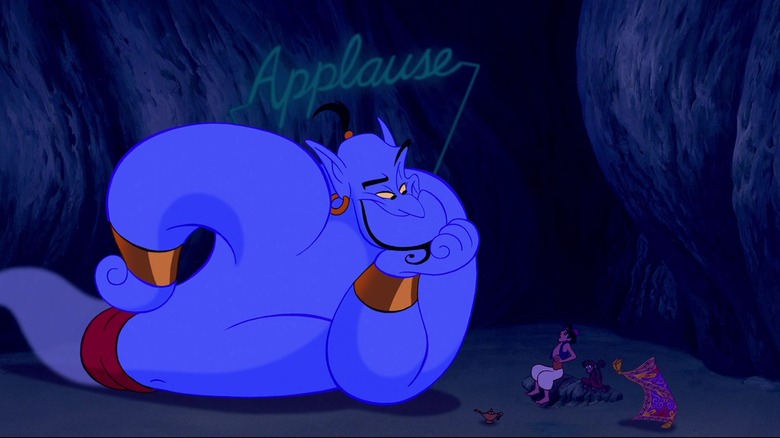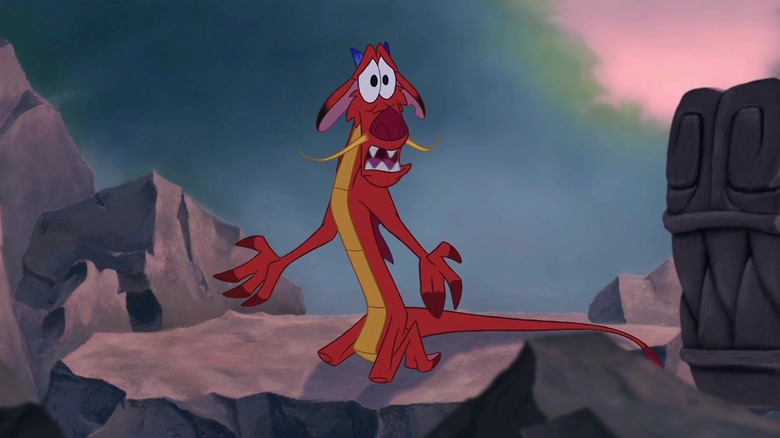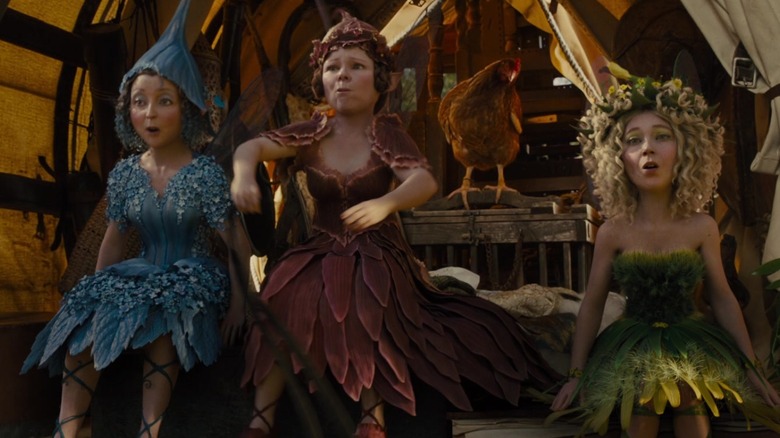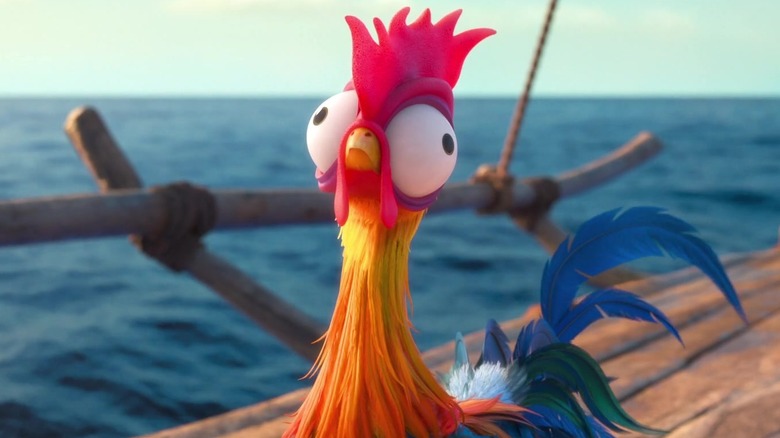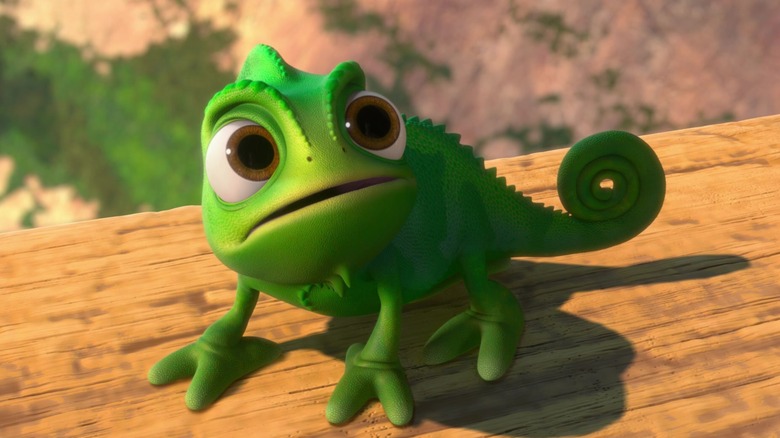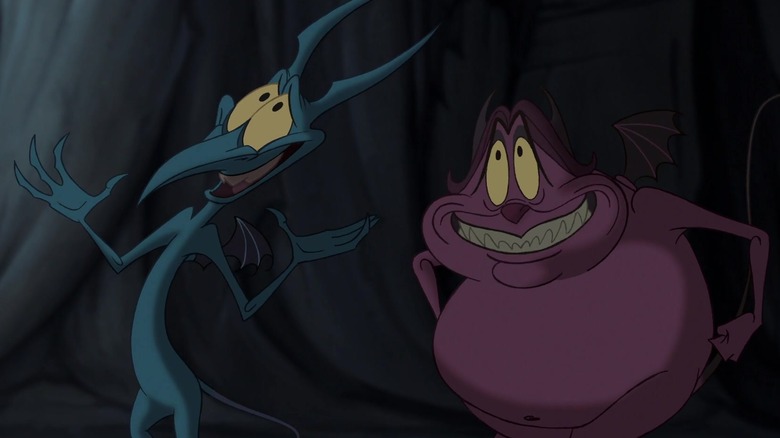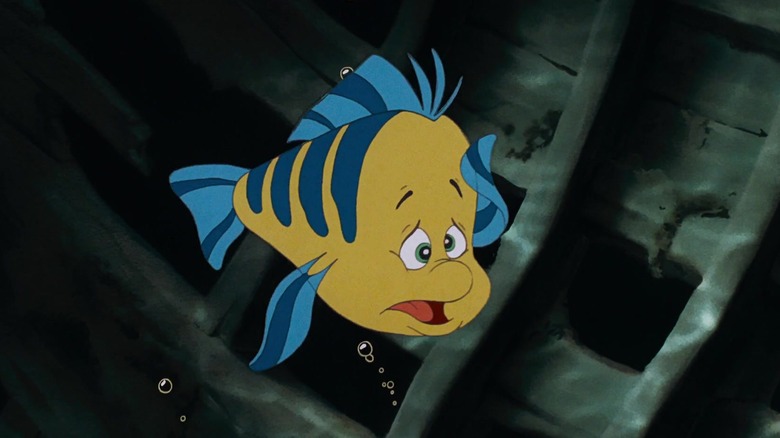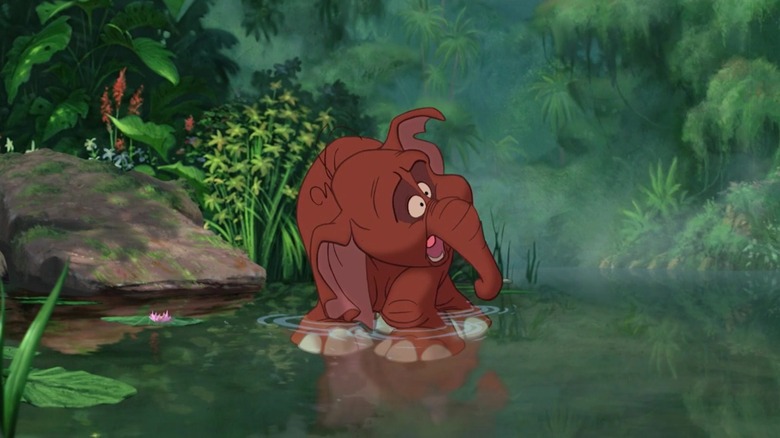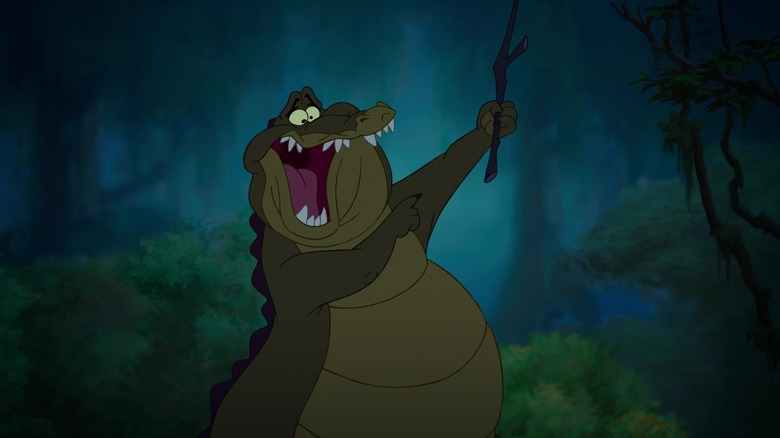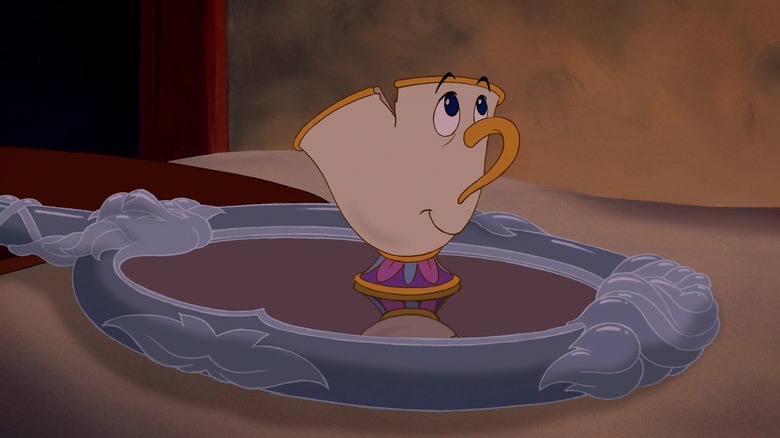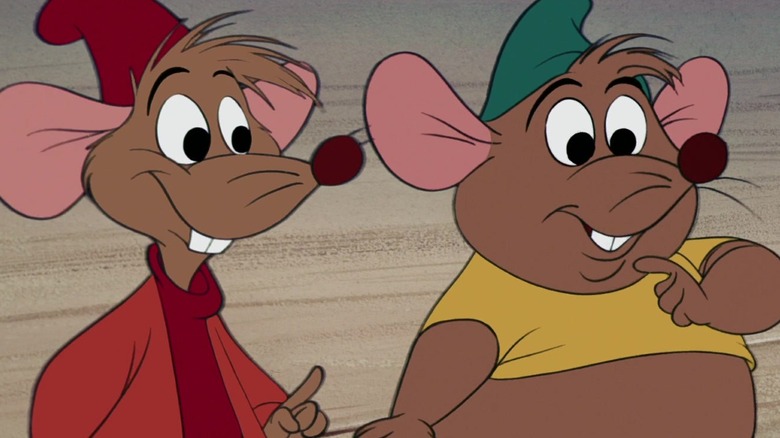The Most Annoying Disney Sidekicks Ever
Every Disney movie needs its adorable sidekicks. How would we know Snow White is overwhelmingly compassionate if she weren't surrounded by flocks of adoring animals? How could Gaston cut an imposing figure without the single-minded devotion of Le Fou? How could Simba have grown to maturity without Timon and Pumbaa around to teach him how to relax and properly eat insects? From sneering minions to big-hearted pets, Disney sidekicks are essential to their movies' success.
But not every Disney sidekick manages to delight. For every lovable weirdo who sticks by the hero's side no matter what, there is a cringeworthy also-ran who makes viewers want to tear their hair out. Some are at odds with the overall tone of the story they're in, creating distracting dissonance. Others are so overpoweringly sweet, they become sickening. Some cause so much trouble, it's a wonder the other characters bother to keep them around.
Grouped together, these are the most annoying Disney sidekicks ever committed to film — and we're here to explain why they deserve to be booted from the Magic Kingdom.
Olaf (Frozen)
Look at that — Olaf's been impaled by his own popularity. Sure, we all found the naïve little snowman cute when "Frozen" first hit theaters in 2013. Even a second go-round in 2019's "Frozen II" couldn't quite melt fondness for Arendelle's most unlikely lover of summer fun.
But as the years have marched on, Olaf-mania has not abated. By this point, it's hard not to feel buried in an avalanche of Olaf-related spin-offs, merchandise, parade balloons, and guest appearances. We do not want to build a snowman any longer, thank you very much, no matter how many times that song gets stuck in our heads.
Is it a tad unfair to punish Olaf for his own success? Perhaps. His only crime is being endearing, which is also his entire purpose. But consider this: Sven, Kristoff's sardonic reindeer, is not on this list. Characters like Olaf, whose appeal depends entirely on cuteness, grow tiresome and grating with too much exposure. Sven, in contrast, keeps things subtle with a wry look here and there (and some human dialogue, courtesy of Kristoff). He might be part of the same omnipresent movie, but unlike Olaf, overexposure doesn't make Sven annoying, because he's not forcing you to listen to his adorable comments all the time. Sorry, Olaf, but you're just too beloved to bear.
The Gargoyles (The Hunchback of Notre Dame)
"The Hunchback of Notre Dame" is one of the strangest Disney movies ever made. For one thing, Victor Hugo's 1831 novel of the same name is a gothic tragedy — not exactly the sort of source material Disney typically adapts. For another, Disney doesn't actually sand away every one of the original story's rough edges. Yes, a lot of characters who bite the dust at the end of Hugo's tome survive in the cartoon. But this is still a movie about genocidal bigotry, religious extremism, and abuse. It doesn't just feature a song called "Hellfire" — it features a song called "Hellfire" that is entirely about the villain's murderous lust for the female lead.
But then, in the midst of all this Parisian angst, there are the gargoyles. Victor, Hugo, and Laverne are an obvious attempt to, as "Hunchback" co-director Kirk Wise put it, lift the audience out of a "trough of despair," but their success is limited. It's not that Charles Kimbrough, Jason Alexander, and Mary Wickes don't do a good job in these roles — it's that they're bizarrely jammed into an otherwise grim movie. What results is enough to give a viewer tonal whiplash: One minute, Esmeralda is contemplating her relationship to the Virgin Mary, the next, Hugo is rhyming "Adonis" with "croissant is." To be honest, that's pretty impressive, but it just doesn't belong in this movie.
Meeko and Flit (Pocahontas)
"Pocahontas" is absolutely crammed with animal (and otherwise nature-aligned) characters. Is this thematically appropriate? Sure. Pocahontas is the princess most in tune with the natural world, after all, prone to manhandling bear cubs and rhapsodizing over wolves crying to the blue corn moon (which, as it turns out, isn't a thing). Her movie should be full of critters large and small ... in theory. In practice, two animal sidekicks, plus a smug British pug, plus a wise grandma tree are just too much for one movie to sustain.
Grandmother Willow justifies her existence, as she's a mentor figure instead of a sassy sidekick. Percy, Governor Ratcliffe's pug, is a snooty little delight. But Flit and Meeko need to take their squabbles elsewhere.
Meeko causes way too much trouble way too often to be anything but annoying, while Flit's sniffy personality pales in comparison to Percy's more successful variation upon that theme. Together, they waste a whole lot of time with their charmless antics. Perhaps if only one of them was present, the other could grow into a successful sidekick. Only Grandmother Willow knows for sure, sadly.
Genie (Aladdin)
What makes the Genie annoying has everything to do with his place in our world, rather than the fictional realm he inhabits. Within the 90 minutes that make up "Aladdin," Robin Williams' zany wish-granter is entertainment personified. His elastic animation, genuine heart, and never-ending supply of impersonations enthrall adults and children alike. He's so successful, in fact, that his impact upon feature animation can still be felt today. Unfortunately, that's also what earns him a spot on this list.
In an effort to replicate Williams' dynamite performance, animation studios began stuffing their movies with pale imitations of the Genie. By the time the mid '90s rolled around, every kiddie flick had a wisecracking sidekick played by a big name actor, often with roots in comedy. This epidemic of tedious 'tude is still with us — you can draw a straight line from the Genie's success to the star-studded mess that is "The Emoji Movie."
This practice has even dinged Disney, evidenced by the fact that the sore-thumb gargoyles of "Hunchback of Notre Dame" are on this list. The Genie's success is dazzling, but it's come at a terrible cost: Many years' worth of bad pop culture references delivered by so-so stars cast for their recognition rather than vocal appropriateness. "Friend Like Me" is a classic song, but it's not worth the worst of the "Ice Age" franchise.
Mushu (Mulan)
Mulan is one of the bravest heroes in all of Disneydom. Dozens of obstacles lay in her path: Her lack of training, her womanhood, and the Huns' massive forces all come close to bringing Mulan's story to an early end. She never quails, meeting every challenge with courage and compassion, despite overwhelming odds. It seems especially unfair, then, that she has to deal with a spoiled little dragon on top of everything else.
Whatever fond memories you have of Mushu, take a moment to put them aside and face facts: Mushu makes Mulan's journey a whole lot harder than it has to be. When she has to stride across camp for the first time and impress her manly might upon all who see her, Mushu's terrible advice nearly gets her exposed and thrown out before the war even starts. Later, he sets off the cannon that alerts the Huns to the Chinese troops' position. Had Mulan not come up with the brilliant idea of creating an avalanche, China might have been doomed right then and there by a dweeby dragon unable to control his fiery breath.
Knotgrass, Thistlewit, and Flittle (Maleficent)
Let's make something perfectly clear: We are not talking about Flora, Fauna, and Merryweather from 1959's "Sleeping Beauty." Those fairies are so capable and charismatic, they transcend the category of "sidekick" altogether and nearly end up outshining Aurora and Phillip. No, we're talking about Knotgrass, Thistlewit, and Flittle, the fairies who bumble their way through 2014's "Maleficent."
These dunderheads look after Aurora in a sweet little cottage, deep in the woods. They also attempt to protect their charge from Maleficent's sinister machinations. That's where the comparisons between these two incarnations of Aurora's guardians end. While the 1959 fairies made audiences laugh with their colorful personalities, the 2014 fairies attempted to appeal through sheer ineptitude. It's hard not to nod along with Maleficent as she rolls her eyes at their goofball antics. While "Sleeping Beauty" often feels like a battle between the fairies and Maleficent, "Maleficent" shrinks the trio into irritating gnats who distract from more consequential characters. Good thing the mistress of evil grows a heart in this movie — otherwise, with these ninnies guarding her, Aurora would have been toast.
Heihei (Moana)
Moana technically has two sidekicks. Remember Pua, the adorable pig? It's okay if you don't — that lovable little pork chop is barely in the movie, despite his cuddly presence in the film's marketing material and on shelves at a Disney Store near you. Heihei, however, you probably recall. He's the rooster determined to smash his last remaining brain cell to bits by pecking at wood, rocks, and irritable demigods.
Heihei isn't the worst offender on this list. His bird-brained bustling inspires decent commentary from those around him (especially Dwayne Johnson's irresistible Maui, who refers to him as "drumstick"), and is even occasionally cute. But it's frustrating that he's the sidekick who gets to tag along on Moana's epic adventure, not the ludicrously cute Pua. Look at him! Look at his pointy ears! Look at that darling little spot over his eye!
Sure, Heihei's plumage is impressive. Yes, his bulging eyes earn a chuckle or two. But when Moana sets sail and the audience watches Pua recede into the distance, it's hard to not feel cheated, and that makes Heihei's moments in the spotlight decidedly more annoying. Alas, poor piglet. We'll never know how helpful you might have been in a fight against a giant kleptomaniac crab.
Pascal (Tangled)
Pascal is ... well, he's there. He doesn't speak. He changes color. He makes little reptilian attempts to protect Rapunzel. But that's about all this silent chameleon can do — well, that and play hide-and-seek, a game at which he has an inherent and unfair advantage. He's one of the blander Disney sidekicks out there, and that means that by the time the movie is over, you've grown tired of him taking screen time away from more interesting folks.
You know who's a more interesting sidekick? Maximus. This war horse (who turns into a total sweetheart whenever Rapunzel's around) makes Pascal all the more irritating in comparison. He provides "Tangled" with no end of humor, from his spats with Flynn Rider to his attempts at disguise. Pascal can change color, but Maximus can swordfight! He's got no arms, yet he can parry and riposte! Maximus' interactions with Pascal provide the little lizard with a certain amount of appeal, but when the equine goes, so goes the entertainment factor. If Pascal felt like fading into the background permanently, the movie wouldn't be missing much.
Pain and Panic (Hercules)
"Hercules" brims with personality. This is a movie that blends visuals from the legendarily caustic political cartoonist Gerald Scarfe, a gospel-inflected soundtrack, and Greek mythology into a successful whole. Add in touches of superhero films and sports sagas, James Woods' unforgettably frenetic take on Hades, and Susan Egan's drawling Megara, the Disney heroine who can't believe she's stuck in a Disney movie, and you have something that absolutely shouldn't work, but does. Somehow, these disparate elements harmonize ... with the exception of Pain and Panic.
Hades' miserable minions are mostly around to screw things up — and boy, do they screw things up. This dim duo fails to turn Hercules mortal, fails to tell their boss about this, and fails to slay Hercules with the Hydra. All the while, they fail to do any of this in an interesting manner.
Everyone else in this movie is interesting, even characters who only show up for a handful of seconds. Who can forget the Fates passing around their one eyeball, or the shifty huckster with a coat full of bootleg sundials? They both dazzle, despite the fact that they each show up only once. Pain and Panic, on the other hand, grow more and more annoying with every scene they're given. Their worst crime is how incredibly irritating they are — which is pretty impressive, considering they attempt infanticide.
Flounder (The Little Mermaid)
"The Little Mermaid" is lousy with sidekicks. Prince Eric has his sheepdog, Ursula has her eels, And Ariel receives counsel from not one, not two, but three wise creatures. Sebastian is a delight, and responsible for two of the greatest songs in the Disney canon. Scuttle gave the world the words "dinglehopper" and "snarfblatt." Flounder, in contrast, is introduced as the scaredy-fish who doesn't want Ariel to do cool things like explore mysterious shipwrecks.
Okay, sure, Flounder is also kind and loyal. But that's true of every good guy in every Disney movie ever made. Beyond that, he's primarily defined by being a major drag — and the fact that, confusingly, he is very clearly not a flounder. As one watches "The Little Mermaid," it becomes impossible not to wonder why Ariel is even friends with this literally yellow-bellied fish. Does she pity him? Does she owe him money? What does Flounder bring to this friendship, exactly, beyond moments of cowardice? If Ariel's smart, she'll realize that unlike Flounder, Sebastian and Scuttle can both visit her on the shoreline, and schedule all her catch-up sessions on the sand.
Tantor (Tarzan)
"Tarzan" is one of Disney's great escapist movies. Sure, none of us actually want to give up the comforts of modern life to live in the jungle with our gorilla brethren, sans toilet paper, Wi-Fi, and delivery pizza. But as audiences watch Tarzan grow into a capable, fearless vine-swinger, it's hard to not become a vicarious jungle master who has no idea what "jury duty" means. Then Tantor steps into frame, and all that fantasy comes crashing down.
When Tarzan, Terk, or Jane are around, the jungle is a wondrous place. When Tantor takes the lead, however, it becomes a dangerous wasteland looking to poison, devour, and infect the unwary. This is a movie all about the majesty of nature, defined by sweeping shots of dense forest, exotic birds, and shimmering waterfalls. A phobic elephant always looking to kill the movie magic by reminding viewers of the existence of piranhas simply isn't fun. Maybe Tantor should have gotten on the boat back to England at the end of the story — he'd clearly be happier in a nice, safe zoo than the wilds he has dwelled in all his life.
Louis (The Princess and the Frog)
"The Princess and the Frog" is overflowing with charming characters, each enjoying their own story arcs. Tiana learns to take a break every once in a while. Naveen learns to do some work periodically. Charlotte realizes friendship is more important than finding Prince Charming. Ray lives, loves, gets squashed, and is reunited with his beloved Evangeline in the sky.
Then there's Louis. Louis is present for all of these things, and does very little else.
Sure, Louis is a good friend to our heroes and dreams of playing the trumpet with the jazz greats. But while every other character in this movie has to sacrifice for their happy ending, Louis mostly just waits around until it happens to him, courtesy of other people's actions. The fact that he has to compete with Ray for superior sidekick status doesn't help, either.
A Cajun firefly with a poet's soul, Ray sings "Ma Belle Evangeline," one of the loveliest songs in the movie, and dies tragically beneath Dr. Facilier's heel. Louis simply can't compare. His trumpeting might be complex, but his characterization is one-note.
Chip (Beauty and the Beast)
Animated sidekicks whose shtick boils down to being adorably childlike tend to wear out their welcome pretty quickly. Chip is perhaps the worst offender in the entire Disney canon. He is entirely defined by being a wide-eyed tot: Every single line of dialogue Chip speaks could be easily preceded by the words "gee whiz." He's not just sweet — he's downright saccharine.
Okay, Chip has purpose. He's there to wonder naively at the magic of love, act as an especially tragic casualty of the Beast's curse, and occasionally help Belle get to where the plot needs her to go. That's important stuff, but it could all be accomplished by any of the other enchanted objects, all of whom have more personality in a single tassel than the world's most annoying teacup has in his entire porcelain body.
Indeed, Chip's flaws are made all the more unforgivable in light of the castle's other denizens. Cogsworth, Lumiere, and Mrs. Potts are all-star sidekicks. Heck, Belle's wardrobe makes her mark by flinging herself into battle. Even the can-can dancing forks from "Be Our Guest" are better than Chip. Do they have dialogue? No. But they're still more appealing.
Gus and Jaq (Cinderella)
When you think of Gus and Jaq, you probably recall them at their most heroic. Alongside their fellow mice, they transform Cinderella's hand-me-down dress into something worthy of a royal ball. Later, when Cinderella has been locked away to prevent the Grand Duke from discovering she's the owner of the glass slipper, Gus and Jaq smuggle the key under her door. Without their efforts, their beloved "Cinderelly" would be denied her happy ending forever.
Gus and Jaq's heroism is real. But it can't blot out the fact that they cause a whole lot of trouble Cinderella has to deal with.
Early on in the movie, they torment Lucifer as Cinderella goes about her duties. Unsurprisingly, this results in a scolding for Cinderella, and a boatload of punitive chores. If these two really want to ease Cinderella's burden, how about they learn to help her keep the house clean?
If they can construct a gown, there seems to be no reason they can't scrub drapery or polish silver. At the very least, they could lay off Lucifer — it isn't hard to imagine how many times their cat-centric pranks have lengthened Cinderella's endless to-do list. Here's hoping Gus and Jaq learn some manners once they move into the palace, because Cinderella does not need to be dealing with cranky animals on top of kingdom management.
